
Caring for Rare Succulents: A Community Guide
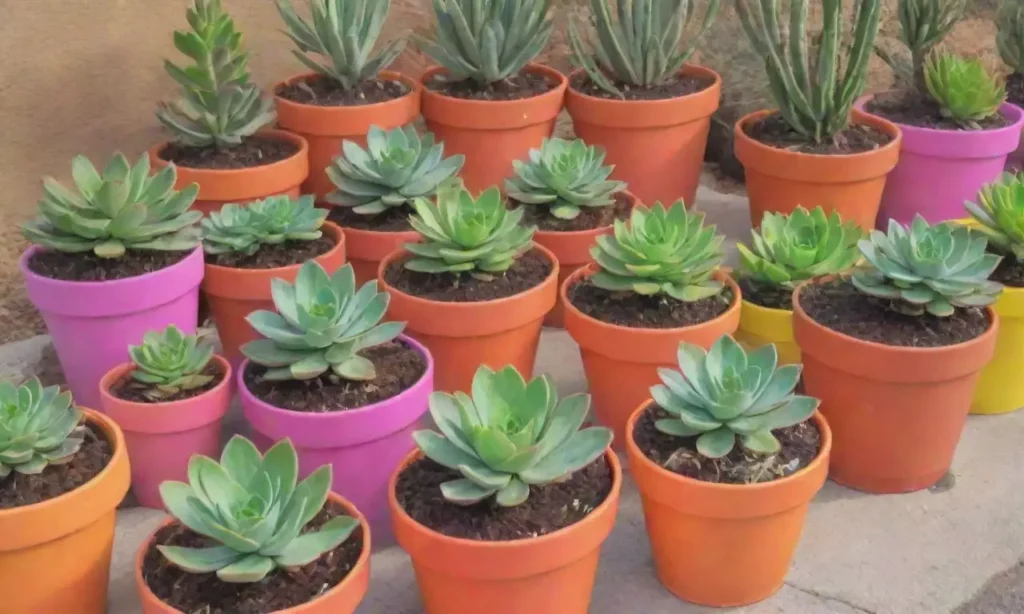
Introduction
Rare succulents are not just beautiful plants; they are fascinating living treasures that can bring unique aesthetics to our homes and gardens. With their incredible diversity in shape, color, and texture, succulents have recently gained increasing popularity among plant enthusiasts and collectors. These unique plants hold a special charm and often come with their own distinct characteristics and requirements that every caregiver should be aware of.
In this article, we will delve into the essentials of caring for rare succulents. Whether you're an experienced gardener or just starting out in the world of succulents, our guide will provide you with tips and insights to ensure delightful success in growing these stunning plants. We will cover various aspects, including their unique needs, optimal conditions for growth, common challenges, propagation techniques, and how to connect with fellow rare succulent enthusiasts.
Understanding Rare Succulents
When we refer to rare succulents, we are talking about species that are not widely cultivated or easily found in local nurseries and garden centers. These plants may have limited natural habitats and can often be at risk due to over-exploitation or habitat loss. Many collectors seek out rare succulents for their striking appearances and unique growing habits, but caring for them requires a more in-depth understanding of their needs.
Defining Rare Succulents
Rare succulents encompass a variety of species, including those that may only be found in specific regions of the world. Certain plants, such as the Haworthia truncata, the elusive Lithops, or the stunning Aloe polyphylla, are just a few examples of succulents that are prized by collectors due to their rarity. These plants often have unique characteristics, such as intricate patterns on their leaves or unusual growth forms, which can make them visually captivating additions to any collection.
Occasionally, the classification of a succulent as "rare" can be subjective and can depend on factors such as geographical distribution, cultivation status, and personal taste. For example, a succulent that is commonly found in one area may be considered rare elsewhere due to lack of availability. This aspect adds an element of excitement to collecting, as enthusiasts continuously seek to expand their collections with rare finds from sources like specialty nurseries, online marketplaces, and plant swaps.
Importance of Conservation
As we journey into the world of rare succulents, it is crucial to acknowledge the importance of conservation. Many of these plants are endangered in their native habitats due to invasive species, environmental changes, and human activities. Being a collector of rare succulents comes with the responsibility of ensuring sustainable practices to protect these plants. Joining local conservation initiatives or supporting organizations that work towards habitat preservation can play a vital role in supporting rare succulent species and their ecosystems.
Moreover, when obtaining rare succulents, it's best to source them from reputable nurseries or directly from ethical growers to avoid the risk of contributing to the declining wild populations. Engaging with community-driven efforts to propagate and cultivate these plants responsibly can also help in conserving them while allowing enthusiasts to enjoy their beauty.
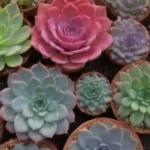 Exploring the Benefits of Joining Local Succulent Enthusiast Groups
Exploring the Benefits of Joining Local Succulent Enthusiast GroupsIdeal Growing Conditions for Rare Succulents
To flourish, rare succulents require specific growing conditions that cater to their unique needs. Understanding their light, temperature, and watering requirements can make all the difference in their health and growth.
Light Requirements
Most rare succulents thrive in bright, indirect light. While they do appreciate the sun, too much direct sunlight can scorch their delicate leaves. For those who live in particularly sunny regions, providing filtered light or partial shade is crucial. Using sheer curtains in your indoor plant area can help soften direct sunlight without depriving them of essential light.
If you're growing rare succulents outdoors, consider placing them in areas that receive morning sun and afternoon shade. The early sun encourages photosynthesis, while the afternoon shade protects the plants from the intense heat. Remember that light requirements can vary significantly between species, so researching individual plants can ensure they receive the ideal light conditions for thriving growth.
Temperature and Humidity
Temperature plays an essential role in the overall wellbeing of rare succulents. Most of these plants prefer warmer temperatures during the growing season , typically between 70°F to 85°F (21°C to 29°C). However, during their dormant phase, many succulents can benefit from cooler temperatures, which can range from 40°F to 60°F (4°C to 15°C).
Humidity levels can also impact rare succulents, as these plants generally prefer low humidity environments. High humidity can lead to issues like rot and fungal growth, so it's best to maintain humidity levels below 50% for optimum success. When growing rare succulents indoors, using a well-ventilated area can help keep humidity levels in check.
Soil and Drainage
Choosing the right soil mix is crucial for rare succulents to prevent water retention that can lead to root rot. A well-draining succulent soil mix, typically composed of a blend of potting soil, sand, and perlite or pumice, creates the perfect foundation for your rare succulents. If necessary, you can customize your soil mix by adjusting the proportions to match the specific needs of individual plants.
Additionally, ensure that your pots have drainage holes to allow excess water to escape. This drainage is vital because while rare succulents need thorough watering, waterlogged roots can lead to significant damage or even death. Establishing a good watering routine, in combination with proper soil and drainage, can promote the long-term health of your succulents.
 Finding the Right Succulent Group: What to Look For
Finding the Right Succulent Group: What to Look ForWatering Techniques for Rare Succulents

One of the key aspects of caring for rare succulents is mastering the art of watering. These plants have evolved to store water in their leaves, stems, and roots, allowing them to thrive in arid conditions. Consequently, determining when and how much to water becomes a critical skill.
The Soil Moisture Check
A common watering technique involves assessing the soil moisture before providing water. It's essential to understand that succulents prefer to dry out completely between watering sessions. You can check the moisture by inserting a finger about an inch deep into the soil; if it feels dry, it’s time for a drink. If it feels damp, it’s best to wait a few days before checking again.
Using a moisture meter can also help determine soil moisture accurately. These inexpensive tools provide an easy way to ascertain when your plants may need water. Importantly, different species of rare succulents may require varying frequencies of watering, so be sure to adjust your routine based on your plants’ characteristics and their environment.
Watering Technique
When you decide it’s time to water, it’s crucial to do so thoroughly. Watering should be deep enough to saturate the entire root ball but not so excessive that water accumulates at the bottom of the pot. A good practice is to water until you see it draining out of the bottom, which indicates that the entire root zone has absorbed moisture.
It's also advisable to avoid watering on the foliage, particularly on sunny days, as this can lead to leaf burn and fungal problems. Watering in the morning allows for any excess moisture on the leaves to evaporate during the day, further reducing the risk of issues.
Seasonal Adjustments
Caring for rare succulents involves understanding their unique seasonal needs. During the growing season, typically spring and summer, these plants will require more frequent watering, as their active growth speeds up. As fall approaches and they enter winter dormancy, you will want to reduce your watering regimen significantly.
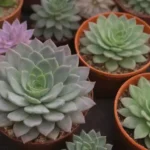 Spotlight on Popular Succulent Clubs Across the Country
Spotlight on Popular Succulent Clubs Across the CountryIn winter, many succulents can go for several weeks without needing water, so be attentive to the specific characteristics of the species you are growing. Knowing your succulent's seasonal cycles helps in maintaining an appropriate balance that ultimately reflects in their health and vitality.
Challenges in Caring for Rare Succulents
Although rare succulents can be a joy to cultivate, they also come with their share of challenges. Understanding these challenges and how to overcome them is necessary for any dedicated succulent keeper.
Pest Problems
Pests can pose significant threats to rare succulents. Common culprits include mealybugs, aphids, and spider mites. Mealybugs, in particular, are notorious for finding their way into succulent collections and can be difficult to eradicate if left unchecked. To combat these pests, it's advisable to inspect your succulents regularly and take swift action if you spot any signs of infestation.
A gentle solution to remove mealybugs is to use a cotton swab dipped in rubbing alcohol to wipe them off the affected areas. For larger infestations, consider using insecticidal soap or neem oil, both of which are safe for succulents while effectively eliminating pest populations. As with any pest management strategy, regular monitoring is key to preventing future outbreaks.
Fungal Diseases
Overwatering and high humidity can lead to fungal diseases that threaten the health of rare succulents. Sudden leaf wilting, brown patches, or a general lack of vigor are signs that your plant may be suffering from a fungal issue. To prevent such occurrences, always ensure that your succulents are potted in well-draining soil and that containers have proper drainage holes.
If your succulent does develop fungal diseases, it's crucial to act quickly. Remove the affected leaves or parts of the plant, and in some cases, you may need to repot the succulent into fresh, dry soil. Ensuring proper air circulation around your plants and avoiding overhead watering can also help mitigate fungal disease risks.
Environmental Disturbances
Rare succulents can be sensitive to environmental changes. Factors such as temperature fluctuations, sudden exposure to bright light, or maritime salinity might shock these delicate plants. To help them acclimate to their new environment, it’s best to introduce changes gradually.
 How to Start Your Own Succulent Community Group in Your Area
How to Start Your Own Succulent Community Group in Your AreaWhen adding new rare succulents to your collection, consider starting them off in a location with low light before gradually exposing them to brighter areas. Similarly, you may want to monitor temperature variations and shift indoor plants away from drafty windows or heat sources to ensure a stable climate conducive to their growth.
Propagation Techniques
One of the joys of caring for rare succulents is the opportunity to propagate them, allowing you to expand your collection and share with friends or fellow enthusiasts. Propagation techniques can widely vary among species, but there are several general methods that you can use.
Leaf Cuttings
Propagating succulents through leaf cuttings is one of the most common practices, especially for species that have plump leaves. To begin, select a healthy leaf from your succulent and gently twist it off the stem without causing damage to the plant. Lay the leaf cuttings on a paper towel in a shaded area to allow the cut end to callus over for a few days.
Once the cut end is calloused, place it in well-draining soil with the cut end facing down, allowing the leaf to establish roots. This method can take a few weeks and, once successfully rooted, new baby succulents will begin to emerge from the base of the leaf.
Offsets and Division
Some rare succulents, such as Aloe or certain Echeveria, produce offsets or pups, which can also be propagated. To propagate, gently remove the offsets from the main plant by cutting them off with a clean knife or twisting them off carefully. Afterward, let the offsets dry and callus over before potting them in suitable soil.
Similarly, certain varieties can benefit from division, where you can separate the entire plant into two or more sections to create new plants. Ensure each section has a good number of roots attached for the best chance of survival.
Seed Propagation
For some rare species, seed propagation may be the only option. This technique requires a bit more patience and know-how, as sowing seeds involves creating favorable conditions for germination. Start by placing seeds on a moist, sterile soil mix without burying them, as most succulents require light for germination. Use a clear plastic cover or humidity dome to maintain moisture levels and temperature.
 The Importance of Mentorship in Succulent Enthusiast Communities
The Importance of Mentorship in Succulent Enthusiast CommunitiesWhile seed propagation can be rewarding, it often requires more time and care compared to other methods. As such, understanding the specific needs of the seeds you are working with is vital to their success.
Connecting with the Community
As a rare succulent enthusiast, connecting with fellow hobbyists and growers can deepen your appreciation and knowledge of these unique plants. Communities offer a wealth of resources, insights, and shared experiences that can significantly enhance your cultivation journey.
Joining Online Platforms
Online platforms like Facebook groups, Reddit forums, and Instagram pages dedicated to succulents can be great outlets to connect with like-minded individuals. Many groups are specifically designed for rare succulent enthusiasts and collectors, where members share photos, care tips, and personal experiences.
Participating in these platforms allows you to ask questions, seek advice, and even share your own journey as a succulent caregiver. Such interactions can help you stay updated with the latest trends in the succulent community, from new species to cultivation methods.
Local Plant Swap Events
Attending local plant swap events provides another exciting opportunity to meet fellow succulent lovers. These gatherings often encourage participants to bring cuttings, offsets, or entire plants to exchange with others. Besides adding new treasures to your collection, these events foster friendships, create support networks, and help diversify your collection with new rare plants you may not find elsewhere.
Before attending a plant swap, consider preparing labels for your plants to share important information about their care. It's also a great opportunity to share knowledge and experiences on rare species, ensuring more enthusiasts can enjoy the beauty of these unique plants.
Educational Workshops and Clubs
Many local gardening clubs and urban botanical organizations host workshops and classes focused on succulent care. These events often provide hands-on learning experiences, valuable insights into cultivation methods, and discussions on conservation efforts. Furthermore, joining a club enables you to connect with other enthusiasts on a deeper level, allowing you to share resources, seeds, and cuttings that may not be readily available.
 Succulent Art: Crafting and Creating Together in Groups
Succulent Art: Crafting and Creating Together in GroupsThese gatherings also create a welcoming atmosphere for those who may be new to the hobby, providing guidance and support from experienced members who are passionate about rare succulents.
Conclusion
Caring for rare succulents can be a fulfilling and enriching experience that combines the joy of nurturing plants with the excitement of expanding your collection. By understanding their unique growing conditions, mastering watering techniques, addressing challenges, and utilizing propagation practices, you can provide your rare succulents with the care they need to thrive in your home or garden.
Connecting with like-minded individuals through community platforms, workshops, and plant swaps can elevate your gardening journey, offering diverse insights and support. As you navigate the world of rare succulents, remember to practice responsible conservation and to cherish the beauty of these unique plants that enrich our lives. Embrace the adventure of collecting, cultivating, and connecting with others who share your passion, and together, you can foster an appreciation for these mesmerizing living treasures.
If you want to read more articles similar to Caring for Rare Succulents: A Community Guide, you can visit the Community groups category.


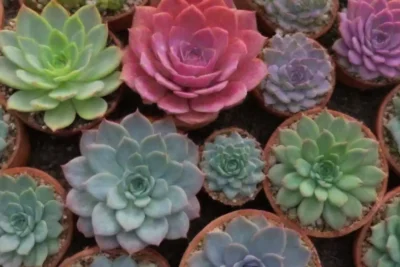
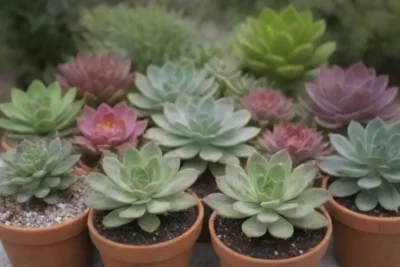
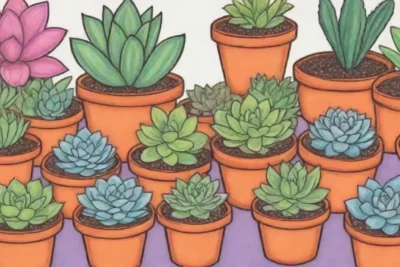

You Must Read